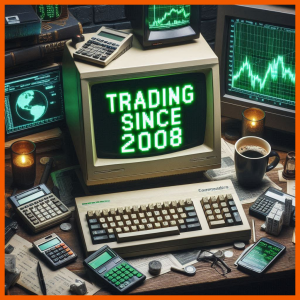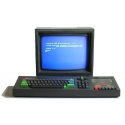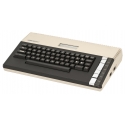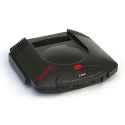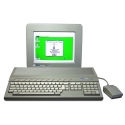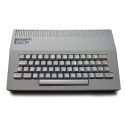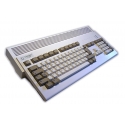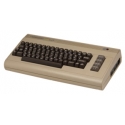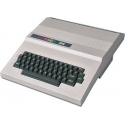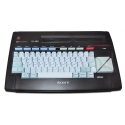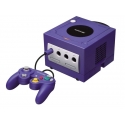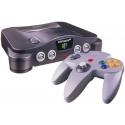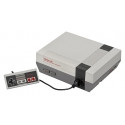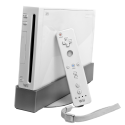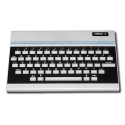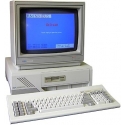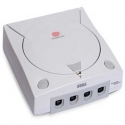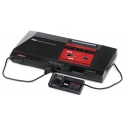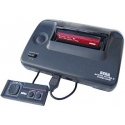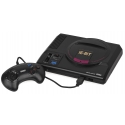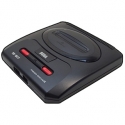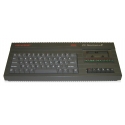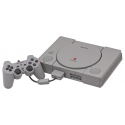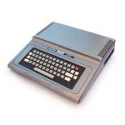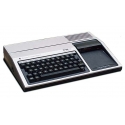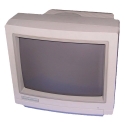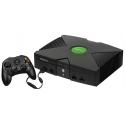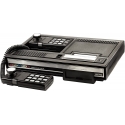No products
Product successfully added to your shopping cart
There are 0 items in your cart. There is 1 item in your cart.
Retro Computers & Gaming
- ASBOs
- Audio & Hi-Fi Cables
- Car Signs
- Coasters
- Connectors
- Electronic Components
- Fridge Magnets
- Keyrings
- Novelty IDs & Licences
-
Retro Computers & Gaming
- Amstrad CPC & PCW
- Atari 800, 1200, 65XE & 130XE
- Atari Jaguar
- Atari ST
- BBC Micro & Acorn
- Camputers Lynx
- ColecoVision
- Commodore Amiga
- Commodore C16, C64, C128 & Vic 20
- Dragon 32 & 64
- Emulation Systems
- Microsoft X-Box
- Monitor Adapters
- MSX Computer
- Neo Geo AES & CD
- Nintendo Gamecube
- Nintendo N64
- Nintendo NES
- Nintendo SNES
- Nintendo Wii
- Oric
- RM Nimbus
- Sega Dreamcast
- Sega Master System 1
- Sega Master System II
- Sega Mega Drive 1 & Genesis 1
- Sega Mega Drive II & Genesis II
- Sega Saturn
- Sinclair ZX Spectrum
- Sony Playstation (PS1)
- Tandy
- Texas Instruments Ti-99/4A
Catalog
-
Free Shipping
on all UK orders
Most UK orders delivered Next Day. Excellent rates for Europe and the Rest of the World -

If you're looking for that hard to find cable for your retro computer or games console, then you're in the right place. We have one of the UK's largest selection of video and interface cables for all your favourite systems: Commodore, Sega, Nintendo, Sinclair, Texas Instruments, Amstrad, Atari and many many more.
Retro Computers & Gaming There are no products in this category
Subcategories
-
Amstrad CPC & PCW
A range of cables, accessories, spare parts and power supplies for the Amstrad CPC home computers and office word processor systems. These include the CPC 464, 6128, 464+ and 6128+ models.
Did you know? During its lifetime, the CPC series sold approximately three million units.
-
Atari 800, 1200, 65XE...
A range of cables for the Atari home games consoles, including: 800, 800XL, 1200XL, 65XE and 130XE.
Did you know? The Atari 800XL was the third version of the Atari 8-bit line of computers introduced in 1983. The system contained a full 64K of memory, had all the standard VLSI chips (Antic, GTIA, Pokey, PIA) and was in a smaller and more compact design. The cartridge port had been move to the top center of the system and used special metal spring loaded doors to allow the insertion and removal of ROM cartridges. This system of spring loaded doors also kept dirt and objects from falling into the cartridge slot when it was not occupied.
-
Atari Jaguar
A selection of video cables for the Atari Jaguar home video console. These include RGB cables, component video cables and s-video cables for a wide choice of connection options.
Did you know? "Jaguar" is a custom chip set primarily intended to be the heart of a very high-performance games/leisure computer. It may also be used as a graphics accelerator in more complex systems, and applied to workstation and business uses. As well as a general purpose CPU, Jaguar contains four processing units. These are the Object Processor, Graphics Processor, Blitter, and Digital Sound Processor. Jaguar provides these blocks with a 64-bit data path to external memory devices, and is capable of a very high data transfer rate into external dynamic RAM.
-
Atari ST
A range of cables, parts and accessories for the Atari ST range of home computers. This includes the ST, STe, STFM, STF and MegaST.
Did you know? The "ST" officially stands for "Sixteen/Thirty-two", which referred to the Motorola 68000's 16-bit external bus and 32-bit internals.
-
BBC Micro & Acorn
A selection of video cables, accessories and spare parts for the BBC range of home computer. This includes the BBC Micro Model A, Model B, BBC Master and BBC Acorn.
Did you know? The BBC wanted to base its project on a microcomputer capable of performing various tasks which they could then demonstrate in the TV series The Computer Programme. The list of topics included programming, graphics, sound and music, teletext, controlling external hardware, and artificial intelligence. It developed an ambitious specification for a BBC computer, and discussed the project with several companies including Acorn Computers, Sinclair Research, Newbury Laboratories, Tangerine Computer Systems, and Dragon Data. Not only was the Acorn Proton the only machine to match the BBC's specification, it also exceeded it in nearly every parameter.
-
Camputers Lynx
The Lynx was an 8-bit British home computer that was first released in early 1983 as a 48 kB model. Several models were available with 48 kB, 96 kB or 128 kB RAM. It was possible to reach 192 kB with RAM expansions on board. John Shireff designed the hardware and Davis Jansons the firmware.
-
Commodore Amiga
A range of audio, video and interface cables for the Commodore Amiga range of home computers: A500, A600, A1200, A1000, A1500, A2000, A3000, A4000, CD32 and CDTV systems.
"The Amiga was so far ahead of its time that almost nobody—including Commodore's marketing department—could fully articulate what it was all about. Today, it's obvious the Amiga was the first multimedia computer, but in those days it was derided as a game machine because few people grasped the importance of advanced graphics, sound, and video. Nine years later, vendors are still struggling to make systems that work like 1985 Amigas".
— Byte Magazine, August 1994 -
Commodore C16, C64,...
A range of cables, spare parts and accessories for the Commodore 16, 64 and 128 range of home computers.
Did you know? Approximately 10,000 commercial software titles were made for the Commodore 64 including development tools, office productivity applications, and games.
-
Dragon 32 & 64
A range of video cables for the Dragon 32 and Dragon 64 home computer systems.
Did you know? In the early 1980s, the British home computer market was booming. New machines were released almost monthly. In August 1982, Dragon Data joined the fray with the Dragon 32; the Dragon 64 followed a year later. The computers sold quite well initially and attracted the interest of several independent software developers, most notably Microdeal.
-
MSX Computer
A range of cables, spare parts and accessories for the MSX home computer range. This includes models produced by Sony, Toshiba and Panasonic.
Did you know? MSX is the name of a standardized home computer architecture, first announced by Microsoft on June 16, 1983, conceived by Kazuhiko Nishi, then Vice-president at Microsoft Japan and Director at ASCII Corporation. It is said that Microsoft led the project as an attempt to create unified standards among hardware makers.
-
Neo Geo AES & CD
A range of video cables for the Neo Geo Advanced Entertainment System (AES) and Neo Geo AES CD games consoles.
Did you know? The Neo Geo (Japanese: ネオジオ Hepburn: Neojio) is a cartridge-based arcade system board and home video game console released on January 31, 1990 by Japanese game company SNK. Although it is a member of the fourth generation of video game consoles, it is the first system in the Neo Geo family, which ran throughout the 1990s .
-
Nintendo Gamecube
The GameCube (Japanese: ゲームキューブ Hepburn: Gēmukyūbu?, officially called the Nintendo GameCube, abbreviated NGC in Japan and GCN in Europe and North America) is a home video game console released by Nintendo on September 14, 2001, in Japan and on November 18, 2001, in North America. It was later released worldwide in 2002. The sixth-generation console is the successor to the Nintendo 64 and competed with Sony's PlayStation 2, and Microsoft's Xbox.
The GameCube is the first Nintendo console to use optical discs for its primary storage medium. The discs are similar to theminiDVD format, and as a result of their smaller size, the system was not designed to play standard DVDs or audio CDs. Nintendo presents a variety of connectivity options for the GameCube. It supports online gaming for a small number of games via the broadband or modem adapter, sold separately; it also connects to the Game Boy Advance, allowing players to access exclusive in-game features using the handheld as a second screen and controller.
Contemporary reception of the GameCube was generally positive. Some praised the extensive software library and high-quality games, while others criticized the console's exterior design and lack of features. Nintendo sold 21.74 million GameCube units worldwide before being discontinued in 2007. Its successor, the Wii, was released in November 2006.
-
Nintendo N64
The Nintendo 64 (Japanese: ニンテンドー64 Hepburn: Nintendō Rokujūyon?), stylized as NINTENDO64 and often referred to as N64, is Nintendo's third home video game console for the international market. Named for its 64-bit central processing unit, it was released in June 1996 in Japan, September 1996 in North America, March 1997 in Europe and Australia, September 1997 in France and December 1997 in Brazil. It is the industry's latest major home console to use the cartridge as its primary storage format, although current handheld systems (such as the PlayStation Vita and Nintendo 3DS) also use cartridges. While the N64 was succeeded by Nintendo's MiniDVD-based GameCube in November 2001, N64 consoles remained available until the system was retired in late 2003.
Code named Ultra 64, the console's design was mostly finalized by mid-1995, though Nintendo 64's launch was delayed until 1996.[4] As part of the fifth generation of gaming, the N64 competed primarily with the PlayStation and the Sega Saturn. The Nintendo 64 was launched with three games: Super Mario 64 and Pilotwings 64, released worldwide; and Saikyō Habu Shōgi, released only in Japan. The Nintendo 64's suggested retail price at launch was US$249.99 and it was later marketed with the slogan "Get N, or get Out!". The console was ultimately released in a range of different colors and designs, and an assortment of limited-edition controllers were sold or used as contest prizes during the N64's lifespan. The N64 sold 32.93 million units worldwide, and in 2009, it was named the 9th greatest video game console by IGN.[5] Time Magazine named it their 1996 Machine of the Year.
-
Nintendo NES
A range of video cables and accessories for the Nintendo Entertainment System (NES) home games console.
Did you know? The best-selling gaming console of its time, the NES helped revitalise the US video game industry following the video game crash of 1983. With the NES, Nintendo introduced a now-standard business model of licensing third-party developers, authorizing them to produce and distribute titles for Nintendo's platform. In 2009, the Nintendo Entertainment System was named the single greatest video game console in history by IGN, in a list of 25. It is the second greatest console behind only the Sega Dreamcast in PC Magazine 's "Top 10 Video Game Consoles of all Time".
-
Nintendo SNES
A range of cables and accessories for the Super Nintendo Entertainment System (SNES) home games console.
Did you know? The Super Nintendo Entertainment System is Nintendo's second home console, following the Nintendo Entertainment System (NES). The console introduced advanced graphics and sound capabilities compared with other consoles at the time. Additionally, development of a variety of enhancement chips (which were integrated on game circuit boards) helped to keep it competitive in the marketplace.
-
Nintendo Wii
The Wii (/ˈwiː/ wee) is a home video game console released by Nintendo on November 19, 2006. As a seventh-generation console, the Wii competes with Microsoft's Xbox 360 and Sony's PlayStation 3.
It succeeded the Nintendo GameCube, and early models are fully backward-compatible with all GameCube games and most accessories. Nintendo first spoke of the console at the 2004 E3 press conference and later unveiled it at the 2005 E3. Nintendo CEO Satoru Iwata revealed a prototype of the controller at the September 2005 Tokyo Game Show.[24] At E3 2006, the console won the first of several awards.[25] By December 8, 2006, it had completed its launch in the four key markets.
-
Oric
Oric was the name used by Tangerine Computer Systems for a series of home computers, including the original Oric-1, its successor the Oric Atmos and the later Oric Stratos/IQ164 and Oric Telestrat models.
With the success of the Sinclair ZX Spectrum, Tangerine's backers had suggested a home computer and Tangerine formed Oric Products International Ltd to develop and release the Oric-1 in 1983. Further computers in the Oric range were released through to 1987 with Eastern European clones being produced into the 1990s.
Based on a MOS 1 MHz 6502A CPU, the Oric-1 came in 16 KB or 48 KB RAM variants for £129 and £169 respectively, matching the models available for the popular ZX Spectrum and undercutting the price of the 48 KB version of the Spectrum by a few pounds. The "48 KB" Oric-1 version was actually 64 KB. The top 16 KB of memory are masked by the BASIC ROMand thus normally not available for the user; The optional disc drive unit contains some additional hardware that allows it to enable or disable the ROM, effectively adding 16 KB of RAM to the machine. This additional memory is used by the system to store the Oric DOS software. Both Oric-1 versions had a 16 KB ROM containing the operating system and a modified BASIC interpreter.
-
RM Nimbus
RM Nimbus was a range of personal computers from British company Research Machines (now RM Education) sold from 1985 until the early 1990s, after which the designation Nimbus was discontinued. The first of these computers, the RM Nimbus PC-186, was not IBM PC compatible, but its successors the PC-286 and PC-386 were. RM computers were predominantly sold to schools and colleges in the United Kingdom for use as LAN workstations in classrooms.
-
Sega Dreamcast
A range of video cables, parts and accessories for the Sega Dreamcast games console. Did you know? The Dreamcast (Japanese: ドリームキャスト Hepburn: Dorīmukyasuto?) is a home video game console that was released by Segaon November 27, 1998 in Japan, September 9, 1999 in North America, and October 14, 1999 in Europe. It was the first entry in thesixth generation of video game consoles, preceding the PlayStation 2, Xbox and GameCube. The Dreamcast is Sega's last home console to date, with no successor released since its discontinuation.
-
Sega Master System 1
A range of cables and accessories for the Sega Master System 1 home video console.
Did you know? The Master System was released as a direct competitor to the Nintendo Entertainment System (NES) in the third generation of video game consoles. The hardware of the Master System also shared many similarities with Sega's handheld game console, the Sega Game Gear. It is estimated the console sold between 10 and 13 million units over its lifetime.
-
Sega Master System II
A range of cables and accessories for the Sega Master System II (2) home games console.
Did you know? The Sega Master System II was released in 1990 and was a redesigned version of the Sega Master System. Later versions of the Master System and all Master System 2's came with one or more games stored in a ROM chip internally. When the machine is switched on with no card / cart inserted, then the game will load automatically.
-
Sega Mega Drive 1 &...
A selection of cables and accessories for the Sega Mega Drive 1 and Sega Genesis 1 home video consoles.
Did you know? In Japan, the Mega Drive did not fare well against its two main competitors, Nintendo's Super Famicom and NEC's PC Engine. However, it achieved considerable success in North America and in Europe, capturing the majority of the 16-bit market share in several territories including the United States and the United Kingdom. Contributing to its success were its library of arcade gameports, the popularity of the Genesis-exclusive Sonic the Hedgehog series,
-
Sega Mega Drive II &...
A range of cables and accessories for the Sega Mega Drive II (2) and Sega Genesis II (2) home games consoles.
Did you know? The Mega Drive II and Genesis II were introduced in 1993 as a smaller, lighter version of the console. This version omits the headphone jack in the front, replaces the A/V-Out connector with a smaller version that supports stereo sound, and provides a simpler, less expensive mainboard that requires less power.
-
Sega Saturn
A selection of video cables and accessories for the Sega Saturn video games console. Did you know? The Sega Saturn (セガサターン Sega Satān?) is a 32-bit fifth-generation home video game console that was developed by Segaand released on November 22, 1994 in Japan, May 11, 1995 in North America and July 8, 1995 in Europe as the successor to the successful Sega Genesis. Saturn has a dual-CPU architecture and a total of eight processors. Its games are in CD-ROM format, and its game library contains several arcade ports as well as original titles.
-
Sinclair ZX Spectrum
A range of cables, spare parts and accessories for the Sinclair Spectrum range of home computers. These include the 128 plus model, 128+2, 128+3 and their variants.
Did you know? The ZX Spectrum +2 was Amstrad's first Spectrum, coming shortly after their purchase of the Spectrum range and "Sinclair" brand in 1986. The machine featured an all-new grey case featuring a spring-loaded keyboard, dual joystick ports, and a built-in cassette recorder dubbed the "Datacorder" (like the Amstrad CPC 464), but was in most respects identical to the ZX Spectrum 128. The main menu screen lacked the Spectrum 128's "Tape Test" option, and the ROM was altered to account for a new 1986 Amstrad copyright message.
-
Sony Playstation (PS1)
The PlayStation (officially abbreviated as PS and unofficially, but more commonly known as PS1 and PSX, not to be confused with the PlayStation X console) is a home video game console developed and marketed by Sony Computer Entertainment. The console was released in Japan on December 3, 1994, and was released in North America and Europe in September 1995. The PlayStation is the first of the PlayStation series of consoles and handheld game devices. As part of the fifth generation of gaming, it primarily competed with the Nintendo 64 and the Sega Saturn. In 2000, a re-designed "slim" version called the PSone was released, replacing the original grey console and named appropriately to avoid confusion with its successor, the PlayStation 2.
The PlayStation is the first "computer entertainment platform" to ship 100 million units, which it had reached 9 years and 6 months after its initial launch. Reactions to the console upon launch were favourable; critics praised the console for the quality of its 3-dimensional graphics. Then Microsoft chairman, Bill Gates, preferred Sony's console to the competition from Sega's Saturn, saying "our game designer likes the Sony machine".
-
Tandy
The RadioShack TRS-80 Color Computer, later marketed as the Tandy Color Computer and sometimes nicknamed the CoCo, is a line of home computers developed and sold by Tandy Corporation.
-
Texas Instruments...
A range of cables and accessories for the Texas Instruments Ti-99/4A home computer system.
Did you know? The TI-99/4 series holds the distinction of being the first 16-bit personal computer. The TI-99/4A had a 16-bit TMS9900 CPU running at 3.0 MHz. All TI-99 models, from the earliest TI-99/4 to the unreleased TI-99/2 and TI-99/8, included plug and play support for all peripherals. Device drivers (called "Device Service Routines", or DSRs) were built into ROMs in the hardware; when a new card was inserted, it was immediately available for any software which needed or wanted to use it.
-
Monitor Adapters
A range of monitor adapters and converters enabling the easy connection of many popular monitors with non-standard interfaces to widely-used connections such as scart for ease of use with retro computers and games consoles.
-
Microsoft X-Box
A range of video cables and accessories for the 1st Generation Microsoft X-Box. Did you know? The Xbox (commonly known today as the original Xbox) is a home video game console and the first installment in the Xbox series of consoles manufactured by Microsoft. It was released on November 15, 2001, in North America, followed by Australia, Europe and Japan in 2002. It was Microsoft's first foray into the gaming console market. The sixth-generation console competed with Sony's PlayStation 2 and the Nintendo GameCube. It was also the first console produced by an American company since the Atari Jaguar ceased production in 1996.
-
ColecoVision
-
Emulation Systems








